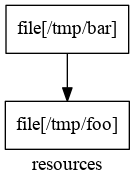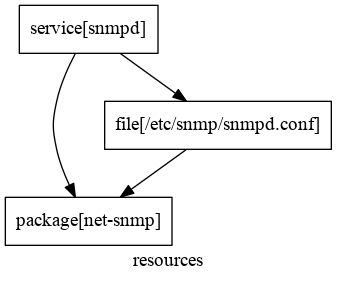Introducing triggers in Gru orchestration framework
Latest version of Gru orchestration framework ships with a new feature called triggers.
Triggers allow for a resource to subscribe for changes in other resources and react to them by executing Lua code.
An example scenario of where triggers could be helpful is having a package resource and a service resource. If the package resource state has changed (e.g. package has been upgraded) you would want to notify the service to perform a full restart, but if only the configuration file has changed you might want to reload the service, rather than restarting it.
Support for triggers has been implemented as part of issue #33, where you can also find more details about the initial implementation.
So how do triggers work?
In order for a resource to be able to determine whether a resource to which it is subscribed to has changed, we need to make sure that the resource we subscribe to is executed first. We do this, so that we can ensure that by the time our resource is scheduled for execution we would know the state of the resource to which we subscribe to.
In other words this means that we need to create an edge between the graph nodes in the resulting DAG graph of our resources.
Consider the following example code, which creates a couple of resources.
foo = resource.file.new("/tmp/foo")
foo.state = "present"
bar = resource.file.new("/tmp/bar")
bar.state = "present"
catalog:add(foo, bar)
The resources above do not have any direct relations between each other and we can confirm that by looking at the resulting resource DAG graph.
$ gructl graph site/code/foo-bar.lua | dot -Tpng -O
The resulting graph looks like this.
Since file is a concurrent resource type once we run this code
we would see the two resources being executed concurrently.
$ gructl apply site/code/foo-bar.lua
2016/11/11 12:55:46 Loaded 2 resources
2016/11/11 12:55:46 Starting 4 goroutines for concurrent processing
2016/11/11 12:55:46 file[/tmp/foo] is concurrent
2016/11/11 12:55:46 file[/tmp/foo] is absent, should be present
2016/11/11 12:55:46 file[/tmp/foo] creating file
2016/11/11 12:55:46 file[/tmp/bar] is concurrent
2016/11/11 12:55:46 file[/tmp/bar] is absent, should be present
2016/11/11 12:55:46 file[/tmp/bar] creating file
2016/11/11 12:55:46 0 up-to-date, 2 changed, 0 failed
Now, suppose that bar wants to subscribe for changes in foo and
execute something if that happens. Here’s where triggers come in
place.
In order to do that we will add the following Lua code to the initial example we’ve used so far.
bar.subscribe[foo:ID()] = function()
print("This is bar, just letting you know that foo has changed")
end
Remeber that I’ve mentioned that subscribing to resources creates edges in the resource graph?
$ gructl graph site/code/foo-bar.lua | dot -Tpng -O
The new graph representation looks like this.
Here’s another, more real-world example of using triggers in resources.
The following Lua code creates a few resources for managing the SNMP service on a GNU/Linux system - it creates resources for managing the package, configuration file and service of the SNMP daemon.
-- Manage the SNMP package
pkg = resource.package.new("net-snmp")
pkg.state = "present"
-- Manage the config file for SNMP daemon
config = resource.file.new("/etc/snmp/snmpd.conf")
config.state = "present"
config.content = "rocommunity public"
config.require = { pkg:ID() }
-- Manage the SNMP service
svc = resource.service.new("snmpd")
svc.state = "running"
svc.enable = true
svc.require = { pkg:ID(), config:ID() }
-- Subscribe for changes in the config file resource.
-- Reload the SNMP daemon service if the config file has changed.
svc.subscribe[config:ID()] = function()
os.execute("systemctl reload snmpd")
end
-- Subscribe for changes in the package resource.
-- Restart the SNMP daemon service if the package has changed.
svc.subscribe[pkg:ID()] = function()
os.execute("systemctl restart snmpd")
end
-- Add resources to the catalog
catalog:add(pkg, config, svc)
The resource dependency graph of the above code looks like this.
What is worth noticing in the above example is that now we use triggers for the service in a way that any changes in the package resource (e.g. upgrade of the package) would trigger a service restart, while a configuration file change would trigger a service reload.
Make sure to check out the Gru project at Github for more information about the project and other examples.


